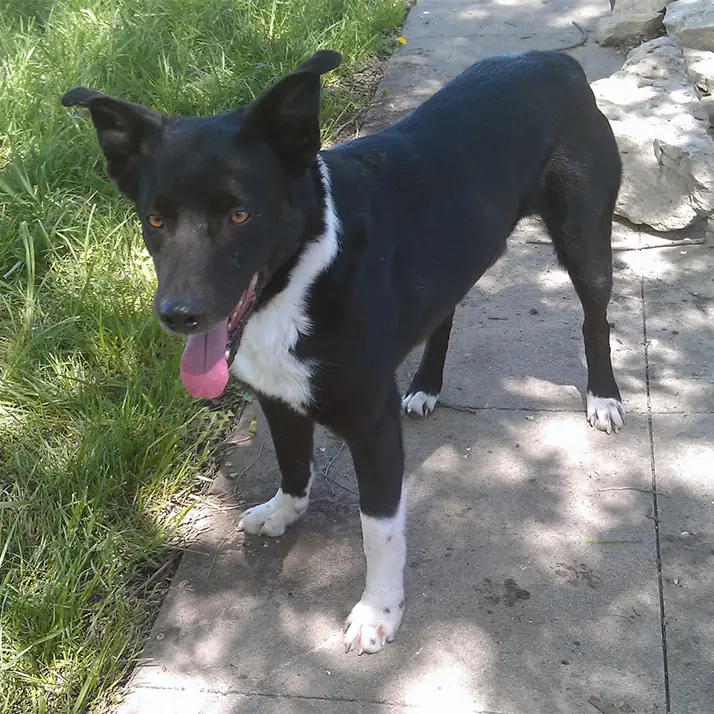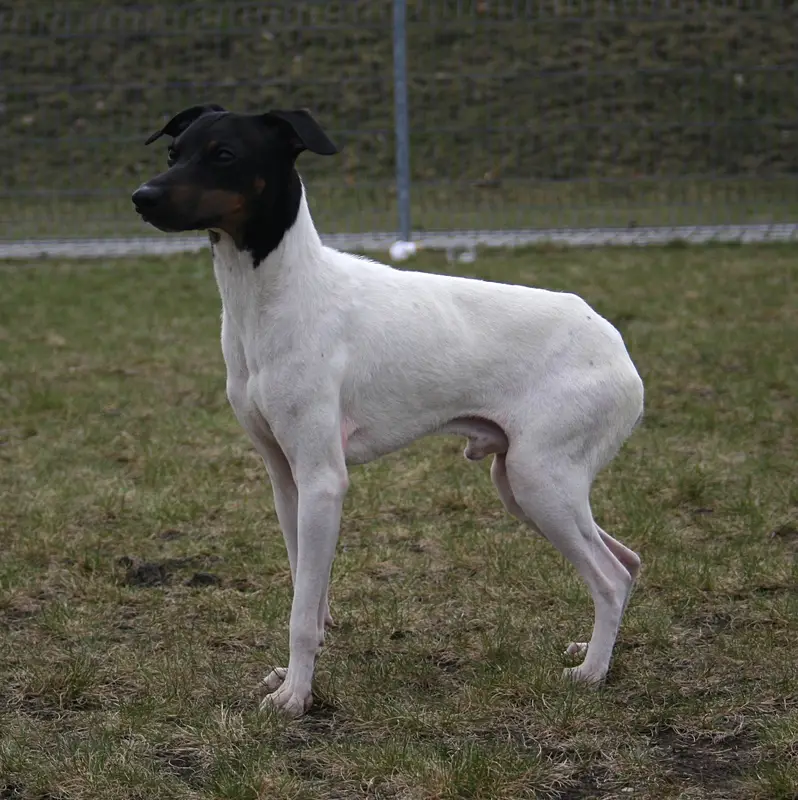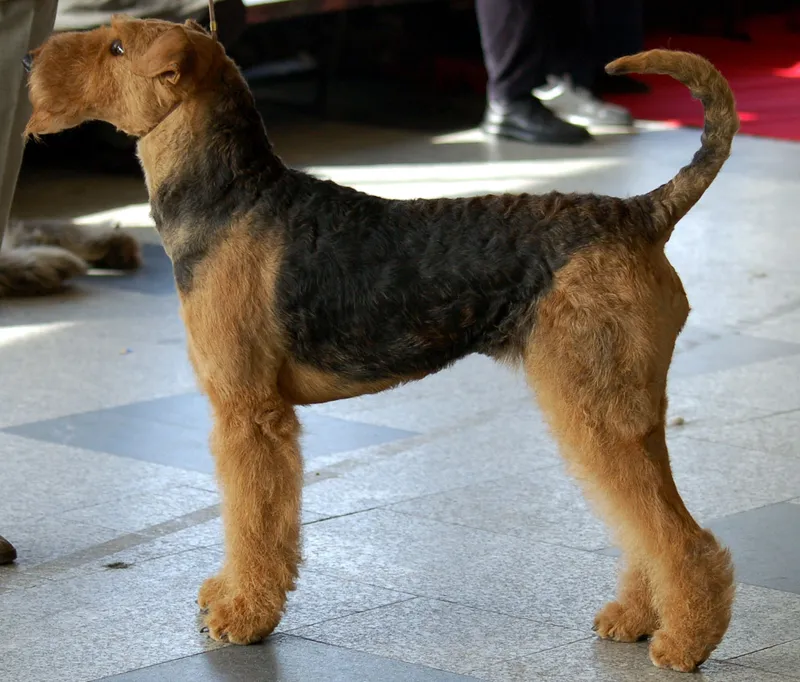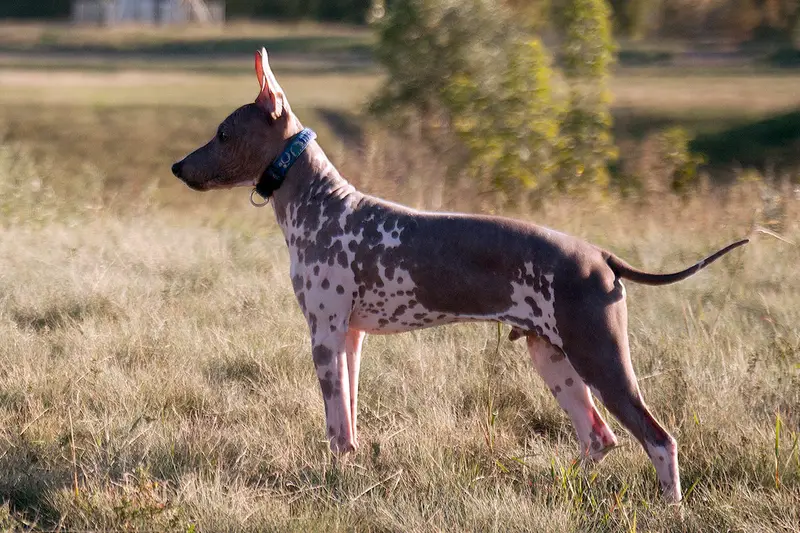Danish-Swedish Farmdog
The Danish-Swedish Farmdog is a medium-small, affectionate breed known for its intelligence and versatility. Originally a farm worker, it excels in various roles, including vermin control and therapy. With a friendly demeanor and playful nature, this breed makes an excellent companion for active families.
Overview
🐕Breed Overview
✨Key Traits
💡What Makes Danish-Swedish Farmdog Special
The Danish-Swedish Farmdog stands out for its versatility and intelligence. Originally bred for various farm tasks, they are not only skilled at vermin control but also excel in dog sports such as agility and obedience.
Their friendly and affectionate nature makes them ideal companions for families, and they are known for their playful interactions with children. This breed is also highly trainable, responding well to positive reinforcement methods.
Their adaptability allows them to thrive in different living environments, from rural farms to urban apartments, as long as they receive adequate exercise and mental stimulation. The Danish-Swedish Farmdog's charming personality and eagerness to please make it a beloved choice for active households.
The Danish-Swedish Farmdog is a charming and versatile breed that has captured the hearts of dog lovers across Scandinavia and beyond. Originating from the rural landscapes of Denmark and southern Sweden, this medium-small dog has a rich history as a working farm companion. With a height ranging from 12 to 15 inches and a weight of 15 to 20 pounds, the Danish-Swedish Farmdog is compact yet robust, making it an ideal companion for active families.
Known for its intelligence and playful nature, this breed excels in various roles, including vermin control, hunting, herding, and even as a therapy dog. Their affectionate demeanor and friendly disposition make them excellent family pets, capable of forming strong bonds with both adults and children. The breed's history dates back to the early days of farming, where they served as invaluable helpers on small farms, catching rats and guarding livestock.
As industrialization led to the decline of small farms, the breed faced near extinction, but dedicated breeders revived it in the late 20th century. Officially recognized in 1987, the Danish-Swedish Farmdog has since gained popularity for its versatility and adaptability. In terms of temperament, the Danish-Swedish Farmdog is known for its friendly and easygoing nature.
They are playful and energetic, requiring regular exercise to keep them happy and healthy. Daily walks, playtime, and participation in dog sports are essential for their well-being. Grooming needs are minimal, with a short, smooth coat that requires little maintenance.
Overall, the Danish-Swedish Farmdog is an excellent choice for active families looking for a loyal and engaging companion. Their intelligence and eagerness to please make them highly trainable, and they thrive in environments where they can be included in family activities. Whether participating in agility competitions or simply enjoying a game of fetch in the backyard, this breed is sure to bring joy and companionship to any home.
🎉Fun Facts
Danish-Swedish Farmdogs are known for their gentle nature, making them great companions for children.
The Danish-Swedish Farmdog is known for its exceptional agility and speed, making it a star in dog sports.
They have a natural instinct for vermin control, often outperforming larger breeds in this task.
They thrive on human interaction and do not do well when left alone for long periods.
This breed is often mistaken for a terrier due to its appearance, but it is classified as a pinscher.
Breed Characteristics
Family & Friends
Good Behavior
Get Up & Go
Household Harmony
Temperament & Personality
✨Key Traits
🐕Core Temperament
The Danish-Swedish Farmdog is characterized by its friendly and easygoing temperament. They are known for being affectionate and loyal companions, often forming strong bonds with their families. This breed is playful and energetic, requiring regular exercise to keep them happy and healthy.
They are generally good with children and other pets, making them suitable for family life. While they may be reserved around strangers, they warm up quickly with proper introductions. Their intelligence and eagerness to please make them highly trainable, and they thrive in environments where they can be included in family activities.
Overall, the Danish-Swedish Farmdog is a well-rounded breed that excels in companionship and versatility.
💫Personality Profile
The Danish-Swedish Farmdog is a lively and affectionate breed that thrives on companionship and activity. They are known for their friendly demeanor, making them excellent family pets. These dogs are playful and enjoy engaging in various activities, from fetch to agility training.
Their intelligence allows them to learn commands quickly, and they often excel in obedience training. While they are generally friendly with strangers, they may be reserved at first, making early socialization important. Their playful nature makes them great companions for children, and they often form strong bonds with their families.
Overall, the Danish-Swedish Farmdog is a versatile and loving breed that adapts well to family life.
🔊Vocal Tendencies
The Danish-Swedish Farmdog has a moderate noise level, with a tendency to bark when alerting to visitors or expressing excitement. They may bark to communicate with their owners or when they want attention.
While they are not excessive barkers, their vocalizations can vary depending on their environment and level of stimulation. Early training and socialization can help manage their barking tendencies, ensuring they are well-behaved in various situations.
Overall, their vocalizations are typically friendly and alert rather than aggressive.
Affection & Social Traits
Energy & Activity
Communication Style
Care Requirements
🏃♂️Exercise Requirements
Daily Exercise
The Danish-Swedish Farmdog is a moderately active breed that requires regular exercise to maintain its physical and mental well-being. Ideally, they should engage in at least 60 minutes of exercise each day, which can be broken down into multiple sessions.
Activities such as brisk walks, playtime in the yard, and engaging in dog sports like agility or flyball are excellent for this breed. They thrive on interactive play, such as fetch or tug-of-war, which not only helps burn off energy but also strengthens the bond between the dog and its owner.
Puppies may require shorter, more frequent play sessions to accommodate their developing bodies, while senior dogs may benefit from gentler activities to avoid strain. Regular exercise is crucial for preventing behavioral issues that can arise from boredom or pent-up energy, such as destructive chewing or excessive barking.
Preferred Activities
🏠Living & Adaptability
Space Requirements
The Danish-Swedish Farmdog is adaptable to various living environments, including apartments, provided they receive adequate exercise. However, they thrive best in homes with access to a yard where they can run and play freely.
Their medium-small size allows them to fit comfortably in smaller spaces, but they do require daily outdoor time to meet their exercise needs. Owners in urban settings should ensure they can provide sufficient walks and playtime to keep the dog engaged.
Without enough space or stimulation, these dogs may exhibit signs of anxiety or destructive behavior.
Climate Preference
🍲Feeding Guide
Schedule
Food Types
Portion Size
Special Nutritional Needs
Danish-Swedish Farmdogs may benefit from a diet rich in protein and healthy fats to support their active lifestyle. It's important to monitor their weight and adjust portions accordingly, especially if they are less active. Some dogs may have sensitivities to certain ingredients, so a grain-free or limited-ingredient diet may be beneficial for those with food allergies.
✨Grooming Requirements
Grooming Overview
The Danish-Swedish Farmdog has a short, smooth coat that requires minimal grooming. Regular brushing once a week is sufficient to remove loose hair and keep the coat healthy.
Bathing should be done only as needed, typically every few months, to avoid stripping the coat of its natural oils. Nail trimming should be performed every 2-4 weeks, and regular dental care is essential to maintain oral health.
Overall, this breed is low-maintenance in terms of grooming, making it an excellent choice for busy families.
Care Schedule
Brush weekly; bathe as needed (every few months); trim nails every 2-4 weeks.
Health Profile
⚕️Health Care
Regular health care is crucial for extending the lifespan of the Danish-Swedish Farmdog. Routine veterinary check-ups, vaccinations, and preventive treatments for parasites are essential to maintain their health.
Early detection of health issues through regular examinations can lead to more effective treatment and management. Additionally, maintaining a balanced diet, providing regular exercise, and ensuring dental care are vital components of a comprehensive health care routine.
Health Issues Overview
⏳Average Lifespan
Genetic Factors
Genetics play a significant role in the lifespan of the Danish-Swedish Farmdog. Like many breeds, they may be predisposed to certain hereditary health issues, such as hip dysplasia and patellar luxation.
Responsible breeding practices that prioritize genetic diversity and health testing can help mitigate these risks. Potential owners should seek reputable breeders who conduct health screenings and provide health clearances for their breeding stock to ensure the best chance of a healthy dog.
Living Conditions
The lifespan of the Danish-Swedish Farmdog can be influenced by various environmental factors, including housing conditions, climate, and social interactions. Dogs living in homes with ample space for exercise and play tend to live longer, as they can engage in physical activities that promote health.
A stable and loving environment with regular social interaction can also contribute to their overall well-being. Additionally, exposure to extreme weather conditions can affect their health; thus, providing shelter and comfort during harsh climates is essential for longevity.
🏥Common Health Issues
Hip Dysplasia
Warning Signs
🔬Diagnosis
Veterinarians typically diagnose hip dysplasia through physical examinations and X-rays.
💊Treatment
Treatment options may include weight management, physical therapy, or surgery in severe cases.
📝Management Tips
Maintain a healthy weight, provide joint supplements, and engage in low-impact exercise to manage symptoms.
Patellar Luxation
Warning Signs
🔬Diagnosis
Diagnosis is usually made through physical examination and observation of the dog's gait.
💊Treatment
Treatment may involve surgery in severe cases.
📝Management Tips
Weight management and avoiding high-impact activities can help manage this condition.
Allergies
Warning Signs
🔬Diagnosis
Diagnosis is often made through elimination diets and allergy testing.
💊Treatment
Treatment may include antihistamines, steroids, or topical treatments.
📝Management Tips
Identify and avoid allergens, and consider hypoallergenic diets or medications.
🛡️Preventive Care
🔬Hip Evaluation
Hip Evaluation assesses the hip joints for dysplasia and other abnormalities, which can lead to arthritis and mobility issues.
📅 Recommended at 12 months and repeated every 1-2 years thereafter.
🔬Patellar Luxation Evaluation
Patellar Luxation Evaluation checks for dislocation of the kneecap, which can affect mobility and cause pain.
📅 Recommended at 12 months and repeated as needed based on symptoms.
🔬Allergy Testing
Allergy Testing identifies specific allergens that may affect the dog's skin and overall health, helping to manage allergic reactions effectively.
📅 As needed, based on symptoms or suspected allergies.
Training
🧠Intelligence & Trainability
💪Work Drive
The Danish-Swedish Farmdog has a strong work drive, stemming from its history as a versatile farm worker. They thrive when given tasks or jobs to do, whether it's participating in dog sports, helping with chores, or engaging in interactive play.
Mental stimulation is just as important as physical exercise for this breed. Activities such as puzzle toys, scent games, and obedience training can keep their minds sharp and prevent boredom.
Without sufficient engagement, they may become restless or develop behavioral issues.
⚠️Training Considerations
While the Danish-Swedish Farmdog is generally eager to please and trainable, some common behavioral challenges may arise, particularly if they are not adequately exercised or mentally stimulated. These dogs can become bored and may resort to destructive behaviors, such as chewing or digging.
Additionally, their strong prey drive can lead to chasing small animals if not properly managed. To overcome these challenges, consistent training, socialization, and providing ample physical and mental activities are essential.
Engaging them in obedience training and interactive games can help channel their energy positively.
📝Training Tips
Training a Danish-Swedish Farmdog can be a rewarding experience, as they are intelligent and responsive to commands. Positive reinforcement methods, such as treats and praise, work best with this breed.
Start training early, focusing on basic commands and socialization with other dogs and people. Incorporate fun activities like agility training or scent work to keep them engaged.
Consistency is key; regular training sessions will reinforce good behavior and strengthen the bond between the dog and owner. Be patient and understanding, as these dogs can be sensitive to harsh corrections.
History & Heritage
📜Origin Story
The Danish-Swedish Farmdog's history is intertwined with the agricultural practices of rural Denmark and southern Sweden. This breed was developed to assist farmers in various tasks, including guarding livestock, hunting vermin, and providing companionship.
Historical records and photographs depict these dogs as integral members of farm families, showcasing their friendly nature and strong work ethic. As small farms began to disappear in the mid-20th century, the breed's population dwindled.
However, dedicated breeders and enthusiasts worked tirelessly to revive the breed, leading to its official recognition in 1987. The breed's journey from near extinction to becoming a beloved companion reflects the resilience and dedication of those who cherish its heritage.
⏳Development History
The Danish-Swedish Farmdog is believed to have originated from crosses between Pinschers and British White Hunting Terriers. Historically, these dogs were known as 'Rottehund' or 'rat dogs' due to their proficiency in controlling vermin on farms.
As industrialization led to the decline of small farms, the breed faced near extinction. In the 1970s, kennel clubs in Denmark and Sweden recognized the breed's importance and initiated a breeding program to preserve it.
The breed was officially named in 1987, marking a significant milestone in its history. Since then, it has gained popularity in Scandinavia and is now recognized by the AKC's Foundation Stock Service, with hopes for full recognition in the future.
🛡️Purpose & Historical Role
The Danish-Swedish Farmdog was historically utilized as an all-purpose farm dog, excelling in roles such as vermin control, herding, and companionship. Its agility and intelligence made it a valuable asset on farms, where it helped protect crops and livestock from pests and intruders.
Additionally, the breed's friendly disposition made it a beloved family pet, often seen playing with children. In modern times, the Danish-Swedish Farmdog has transitioned into various dog sports, showcasing its versatility and athleticism.
Its historical significance as a working dog continues to resonate with owners who appreciate its rich heritage.
🏺Cultural Significance
The Danish-Swedish Farmdog has deep roots in the agricultural history of Denmark and southern Sweden, where it served as a versatile farm worker for centuries. This breed was integral to daily farm life, performing various roles such as vermin control, herding, and companionship.
Its friendly demeanor and intelligence made it a favorite among families, often seen playing with children. The breed's historical significance is reflected in its name, which directly translates to 'farm dog,' highlighting its essential role in rural communities.
The breed's revival in the late 20th century is a testament to the dedication of enthusiasts who recognized its value and sought to preserve its lineage.
Conservation Status
This breed is less common but has stable populations in certain regions.









